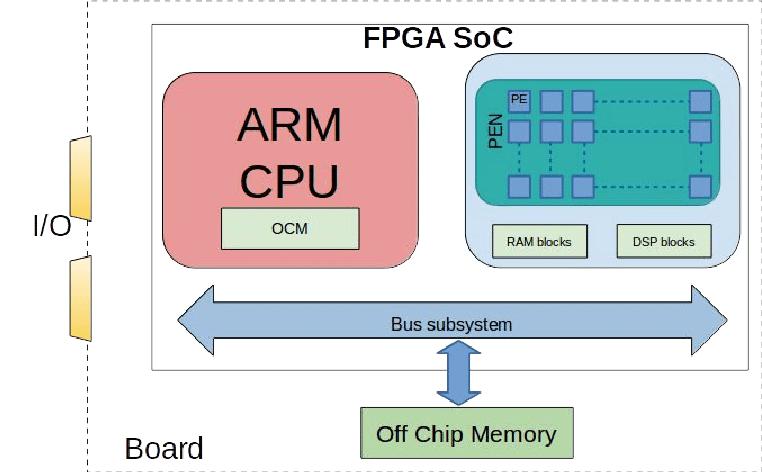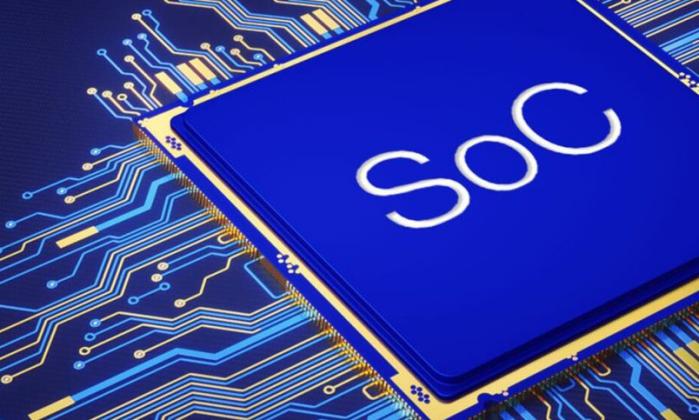SoC FPGA: An Integrated and Efficient Computing Solution
What is SoC FPGA?
 SoC FPGA (System on a Chip Field-Programmable Gate Array) is a technology that integrates an entire system on a single chip. It combines a hard-core processor system based on ARM architecture within an FPGA framework, achieving an efficient integration of hardware and software.
SoC FPGA (System on a Chip Field-Programmable Gate Array) is a technology that integrates an entire system on a single chip. It combines a hard-core processor system based on ARM architecture within an FPGA framework, achieving an efficient integration of hardware and software.
How Does SoC FPGA Work?
The operation of SoC FPGA is based on the co-design of hardware and software. It typically includes a hard-core processor system (e.g., ARM processor) and a programmable logic array (FPGA). The processor runs the operating system and applications, while the FPGA part is used to implement hardware acceleration and custom logic functions. The two communicate via an internal bus, enabling efficient system collaboration. In essence, the core value of SoC FPGA lies in:
● Co-design architecture: The processor runs the operating system and complex algorithms, while the FPGA implements customized hardware acceleration modules. The two exchange data at the nanosecond level via AXI/PCIe buses.
● Technological breakthroughs: AMD's second-generation Versal Premium series, manufactured using a 6nm process, supports the CXL 3.1 protocol for a 64Gb/s host connection and offers an LPDDR5X memory bandwidth of up to 8533Mb/s, making it particularly suitable for AI model training and 5G base station signal processing.
Key Features and Applications of SoC FPGA
1. High Integration: Integrates processor, memory, and peripherals on a single chip, reducing system complexity.
2. Flexibility: The FPGA part can be reconfigured as needed, offering high programmability.
3. Low Power Consumption: Optimized hardware design balances performance and power consumption.
4. Real-time Processing: The parallel processing capability of FPGA makes it suitable for real-time data processing.
5. Scalability: Supports the addition of custom peripherals and functional modules.
SoC FPGA is widely applied in the following fields:
● Communication Systems: For protocol conversion and high-speed data processing.
● Industrial Automation: To achieve complex control and data acquisition.
● Automotive Electronics: Supporting autonomous driving and in-vehicle systems.
● Medical Equipment: For real-time data processing and diagnostics.
Advantages of SoC FPGA Over Traditional FPGA
1. Higher Integration: SoC FPGA integrates processors and FPGA, reducing the need for external components.
2. Lower Power Consumption: Through hardware optimization, SoC FPGA outperforms traditional FPGA in power consumption.
3. Higher Development Efficiency: Supports co-development of software and hardware.
Technical Comparison
Technology | SoC FPGA | Traditional MCU | General-purpose CPU | GPU |
Parallel Processing Capability | Millions of logic units | Single-threaded | Multi-core (usually <64) | Thousands of CUDA cores |
Energy Efficiency Ratio | 10-100GOPS/W | 1-10GOPS/W | 0.1-1GOPS/W | 1-10GOPS/W |
Development Cycle | 6-12 months (complete system) | 1-3 months | 3-6 months | 3-6 months |
Temperature Range | -40°C至+125°C | -40°C至+85°C | 0°C至+70°C | 0°C至+90°C |
Popular SoC FPGA Manufacturers
1. Intel: Offers products such as Cyclone V SoC FPGA.
● Dual-core ARM Cortex-A9 @ 800MHz
● 110K logic units
● Supports DDR3-800
● Typical power consumption: 5W
2. Xilinx (AMD): The Zynq series is its representative product, with the Zynq UltraScale+ series holding a 65% share of the communications market.
● Quad-core ARM Cortex-A53 @ 1.5GHz
● Dual-core ARM Cortex-R5 @ 600MHz
● 600K logic units
● Supports DDR4-2400
● Machine learning accelerators
Challenges and Limitations
 Despite its significant advantages and broad application prospects, SoC FPGA technology faces several challenges and limitations. First, development complexity is a major issue. Developing SoC FPGA requires expertise in both hardware design and software development, increasing the difficulty and time cost. Second, power management remains a challenge in high-performance applications. Although SoC FPGA has made progress in power optimization, further improvements are needed for high-load scenarios. Additionally, cost is a concern. The design and production of SoC FPGA require substantial R&D and manufacturing costs, leading to relatively high product prices and limiting its application in low-end markets. Lastly, security issues are becoming increasingly prominent. As SoC FPGA is used more in data centers, cloud computing, and edge computing, ensuring the security of data transmission and storage has become a key focus of the industry.
Despite its significant advantages and broad application prospects, SoC FPGA technology faces several challenges and limitations. First, development complexity is a major issue. Developing SoC FPGA requires expertise in both hardware design and software development, increasing the difficulty and time cost. Second, power management remains a challenge in high-performance applications. Although SoC FPGA has made progress in power optimization, further improvements are needed for high-load scenarios. Additionally, cost is a concern. The design and production of SoC FPGA require substantial R&D and manufacturing costs, leading to relatively high product prices and limiting its application in low-end markets. Lastly, security issues are becoming increasingly prominent. As SoC FPGA is used more in data centers, cloud computing, and edge computing, ensuring the security of data transmission and storage has become a key focus of the industry.
Future Trends of SoC FPGA
The future development of SoC FPGA technology is promising. As technology advances, SoC FPGA is expected to develop towards higher performance, lower power consumption, and greater intelligence to meet the demands of more complex and diverse application scenarios.
1. AI and Machine Learning: The application of SoC FPGA in AI acceleration and edge computing will continue to grow.
2. 5G and 6G Communications: Supporting high-speed data processing and low-latency communication.
3. Autonomous Driving: Its application in automotive electronics will further expand.
In summary, SoC FPGA, as a highly integrated computing solution, combines the flexibility of processors with the high performance of FPGA, making it suitable for a variety of complex application scenarios. With the development of AIoT and 5G-Advanced, it is expected that over 60% of edge devices will adopt SoC FPGA solutions by 2025. Despite challenges such as development complexity and cost, SoC FPGA has enormous potential in AI, communications, and autonomous driving, promising a broad future.
Conevo ics online store
Conevo is an independent electronic component distributor focused on supplying ic components in short supply to customers from all over the world. At Conevo, you can quickly obtain your in-demand ics or achieve one-stop ic procurement for your electronics projects. Here are some of the recent hot and popular components!
1. The ADM485ARZ is a low-power differential line transceiver designed for high-speed bidirectional data communication on multipoint bus transmission lines. It operates on a single 5V supply, supports data rates up to 5 Mbps, and features thermal shutdown and short-circuit protection. The device is suitable for industrial automation, data acquisition, and multi-drop communication networks.
2. The TCAN1145DMTRQ1 is a high-performance CAN FD transceiver produced by TI, supporting data rates up to 5 Mbps, featuring selective wake-up and partial networking capabilities. It operates on a supply voltage of 5 to 28 volts, offers ±58-V bus fault protection, and is packaged in a VSON-14.
3. The MPC885CZP133 is a 32-bit microprocessor from NXP Semiconductors, operating at 133MHz and featuring a PowerQUICC architecture with a communication processor module (CPM), supporting ATM, USB, dual 10/100 Ethernet, and security functions.
Website: www.conevoelec.com
Email: info@conevoelec.com








